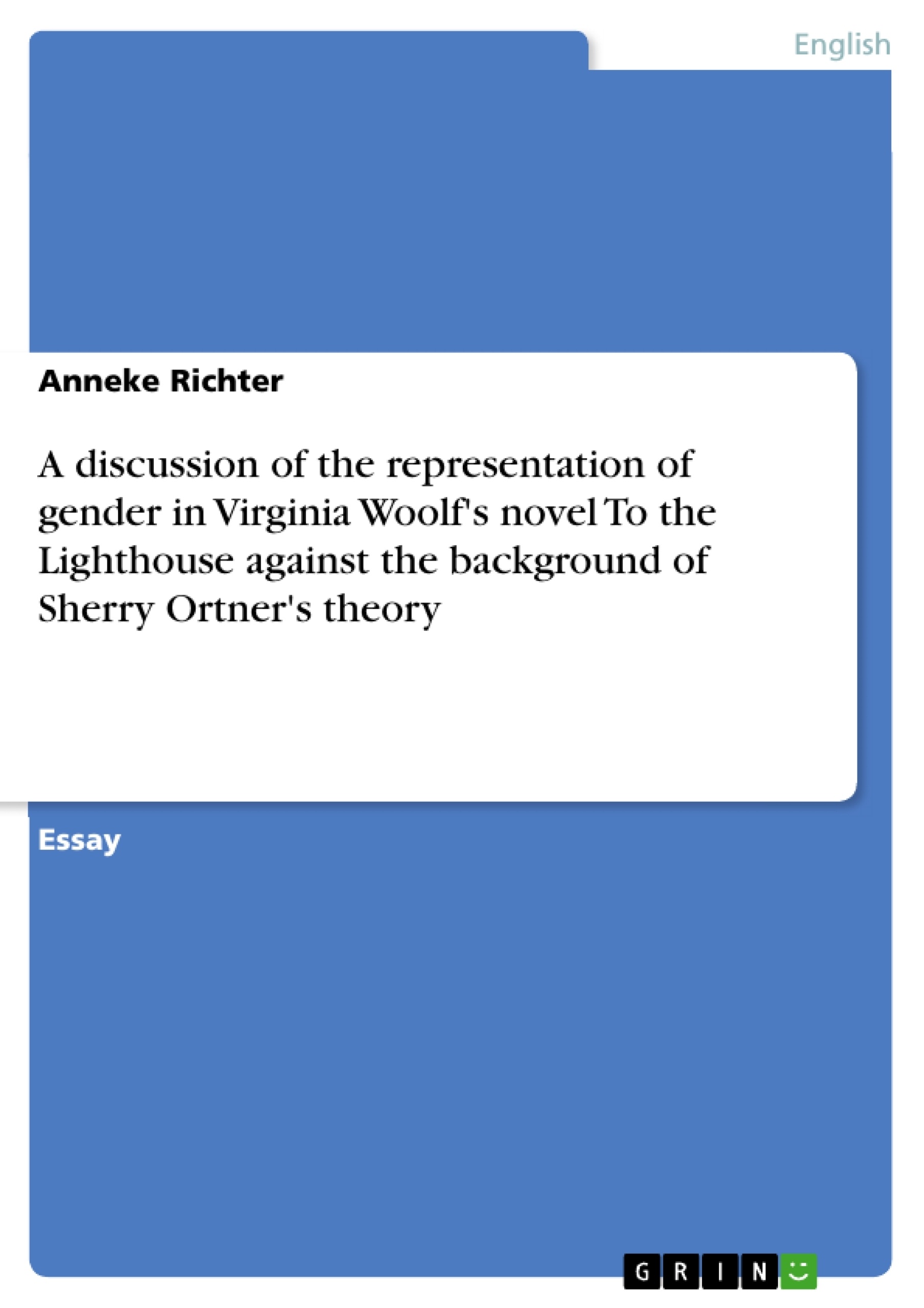Virginia Woolf’s novel 'To the Lighthouse' was first published in 1927, and like the author’s following books, it was facing towards modernity. Woolf picked out many central themes of modernism, such as time, new narrative techniques and the question of gender, and merged them into a novel flowing as a stream of consciousness, giving the reader an insight into the inner thoughts of various characters. As Auerbach puts it, “a woman’s daydreams”, were in fact made “the paradigm for modernist conceptions of fragment, detail and randomness”.
Inhaltsverzeichnis (Table of Contents)
- Introduction
- Sherry Ortner's gender theory
- Virginia Woolf's novel To the Lighthouse
- The representation of gender in the novel
- Conclusion
Zielsetzung und Themenschwerpunkte (Objectives and Key Themes)
This essay examines the representation of gender in Virginia Woolf's novel *To the Lighthouse* in the context of Sherry Ortner's theory. It explores how Woolf's novel reflects and challenges traditional gender roles and explores the complexities of masculinity and femininity.
- The relationship between gender and culture
- The representation of traditional gender roles
- The portrayal of female creativity
- The significance of binary oppositions in the novel
- The concept of "stream of consciousness" as a narrative technique
Zusammenfassung der Kapitel (Chapter Summaries)
The introduction presents a brief overview of Virginia Woolf's novel *To the Lighthouse* and its place within modernism, highlighting its themes of time, narrative techniques, and the question of gender. It also provides an overview of the essay's main objectives.
The second section delves into Sherry Ortner's gender theory, analyzing her key arguments on the universal secondary status of women and the biological and social factors that contribute to this phenomenon. It explores Ortner's theory of women's connection to nature and their problematic intermediate position between nature and culture.
The third section examines the representation of gender in *To the Lighthouse*, focusing on the allocation of roles, the portrayal of different forms of creativity, and the significance of binary oppositions in the novel. It explores how the novel challenges traditional gender roles through the characters of Mr. Banks and Lily Briscoe.
Schlüsselwörter (Keywords)
The main keywords and focus topics of this essay include gender representation, modernism, stream of consciousness, Sherry Ortner's theory, *To the Lighthouse*, Virginia Woolf, traditional gender roles, feminine and masculine creativity, binary oppositions, and the symbolic significance of the lighthouse.
- Arbeit zitieren
- Anneke Richter (Autor:in), 2004, A discussion of the representation of gender in Virginia Woolf's novel To the Lighthouse against the background of Sherry Ortner's theory, München, GRIN Verlag, https://www.grin.com/document/51870



